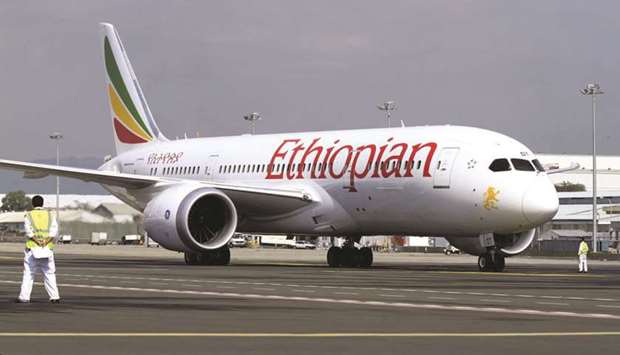Continent Africa comprises some 54 countries. Africans total more than 12% of the global population, but surprisingly they make up only 3% of the world’s air travellers.
Africa has 731 airports and 419 airlines with an aviation industry that supports around 6.9mn jobs and $80bn in economic activity, data show.
And according to the International Air Transport Association (IATA), Africa is set to become one of the fastest growing aviation regions in the next 20 years with an annual expansion of nearly 5%.
While it is evident that aviation has the potential to fuel economic growth in Africa, several barriers do exist.
Weak infrastructure, high ticket prices, poor connectivity and lack of proper liberalisation are some of the headwinds on African aviation’s path, albeit the continent currently sees an economic boom with tourism benefiting from greater prosperity.
But African aviation industry may get the much-needed thrust with the continent getting on to the ‘Open Skies’ trajectory , which is at the heart of the Single African Air Transport Market (SAATM), a flagship project of the African Union (AU).
Industry experts say implementing the SAATM, which is similar to the European Union’s (EU) single aviation market, would go a long way towards making African air travel more competitive by reducing what many describe as “protectionist policies”.
The movement is indeed promising and will yield greater results once all African countries are onboard.
IATA’s data show some 28 countries have already signed up for SAATM. They are Benin, Burkina Faso, Botswana, Capo Verde, Central African Republic, Chad, Congo, Côte d’Ivoire, Egypt, Ethiopia, Gabon, Gambia, Ghana, Guinea Conakry, Kenya, Liberia, Mali, Mozambique, Niger, Nigeria, Rwanda, Sierra Leone, South Africa, Swaziland, Togo, Zimbabwe, Lesotho and Cameroon.
These countries represent more than 80% of the existing aviation market in Africa.
An IATA survey suggested that if just 12 key Africa countries opened their markets and increased connectivity, an extra 155,000 jobs and $1.3bn in annual GDP would be created in those countries.
High ticket prices are cited as a major disincentive for Africa’s air transport sector. It is expensive travelling to and from Africa, and worse still, tickets are exorbitantly priced for travel within Africa, which is an obvious off-shoot of inadequate competition in the continent’s air transport sector.
Some argue it is almost 50% more expensive to fly across Africa than it is in other regions, which reportedly discourages Africans from flying.
According to the African Airlines Association (AFRAA), fuel cost remains a major component of the operating expense of every airline, accounting for between 40-50% of total direct operating costs.
African countries are yet to fully open up their skies to one other, yet some of them have opened up to carriers from other continents. Non-African airlines currently fly about 80% of intercontinental traffic to and from Africa.
As a result, it is often cheaper to fly from an African city to a neighbouring city via London, Amsterdam, or Doha than to travel direct!
The lack of domestic flights causes significant issues, with stopovers causing double or triple the journey times on many routes.
For example, when travelling from Abidjan to Kampala, one has to fly mostly via Istanbul and reconnect, because there are no direct flights.
Several African countries established national airlines after their independence, mainly focusing on flights to destinations outside the continent.
Many of these carriers have been propped up financially by the state exchequer and protected by regulation, stifling competition and leaving domestic and regional routes undeveloped for a long time.
Poor safety record is often cited as another handicap for African aviation. Even some African airlines with good safety records are reportedly blocked from flying to the EU airports because of a lack of confidence in African safety regulators.
Certainly, the existing infrastructure is causing problems for airlines in Africa. With passenger growth in excess of 7.5% in 2017, the continent’s airports are facing grave challenges, and in some cases, the existing facilities are not designed to cater to the rapidly growing passenger numbers.
But in recent years, African governments and increasingly foreign investors, including the Chinese, have invested heavily in African infrastructure, airports in particular.
Certainly, African aviation is on the cusp of a major lift-off. Recognising aviation’s potential in catapulting the continent’s economic growth, African Union has launched the “Single African Sky” project as part of “Agenda 2063”.
The creation of a single unified air transport market in Africa will advance the liberalisation of civil aviation in Africa; IATA said and noted it will provide an impetus to the continent’s economic integration agenda.
SAATM will ensure aviation plays a major role in connecting Africa, promoting its social, economic and political integration and boosting intra-Africa trade and tourism as a result, IATA noted as it fully supports the initiative.
Analysts believe the implementation of a project to develop the African Union Passport, which should be available to all Africans from 2020, will facilitate travel within Africa.
Ethiopia, one of the fastest growing African countries, recently launched a visa-on-arrival facility for all African travellers.
The service, that took effect on November 1 last year, will probably make it easier for Africans to visit Ethiopia, home to the African Union (AU) headquarters.
With Ethiopia showing the way for some other African countries to follow, it is expected that air travel within the continent will get a lot easier as it emerges as a major global economic power house.
With open skies, public-private partnerships for airport infrastructure and operations upgrade and visa liberalisation, African aviation looks set to soar high.
Pratap John is Business Editor at Gulf Times.

A member of the ground crew directs an Ethiopian Airlines plane at the Bole International Airport in Ethiopia’s capital Addis Ababa (file). Weak infrastructure, high ticket prices, poor connectivity and lack of proper liberalisation are some of the headwinds on African aviation’s path, albeit the continent currently sees an economic boom with tourism benefiting from greater prosperity.



